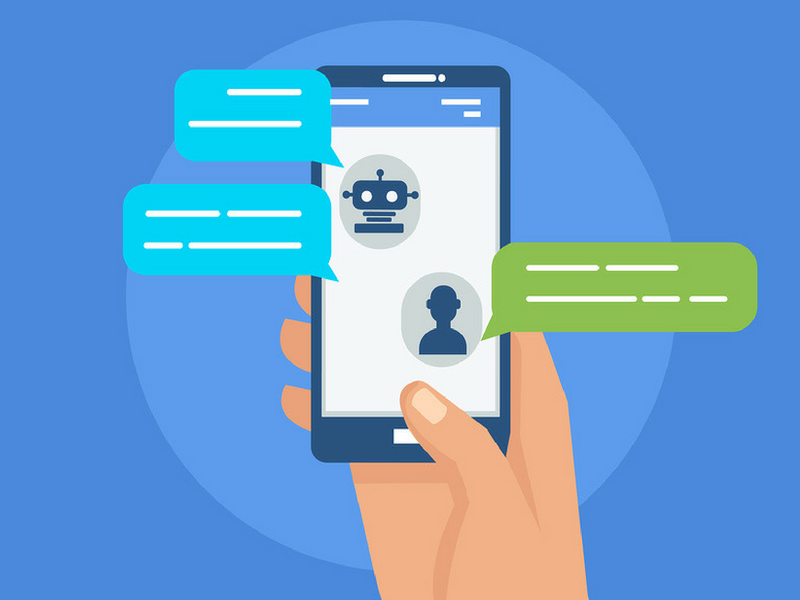Chatbots: 7 Mistakes Companies Should Avoid
The evolution of artificial intelligence is now in full motion and chatbots have become the latest trend for businesses seeking a more efficient way to reach out to prospective clients.
According to Oxford Dictionaries, a chatbot is “A computer program designed to simulate conversation with human users, especially over the Internet.”
Chatbots have been immensely beneficial—especially in the marketing industry—as it offers businesses a newer way to interact with the world and most importantly their customers. Aided bythe ever-growing popularity of messaging apps, chatbot technology grants business owners a major advantage over competitors.
Users on messaging platforms like WhatsApp, Slack, Skype are growing exponentially with Facebook Messenger recording more than 1.2 billion monthly users. Online chatbots can save a lot of time by automating customer support and coupled with the spread of messengers, the need for a virtual chatterbox that mimics human conversations are becoming increasingly in demand.
“Chatbot intelligence will increase through better use of conversational interfaces powered by AI. Companies will begin to see the true potential of automated conversations at scale, not only for customer support and retention, but also acquisition,” said Alex Attinger, CEO and Founder of Social.Limited in a report.
“Integrations with legacy systems will increase, and messaging platforms such as Facebook Messenger will gradually become the homepage of the web for millions of users. Bots are not meant to replace humans, but they will bridge the gap between brands and consumers in ways that no other marketing platform has been able to do before.”
According to Gartner, by 2020, over 85% of customer interactions will be handled without a human—especially now that you can get a chatbot with the best AI readily available for use.
However, the capabilities of a chatbot system go way beyond providing human-like responses to customers’ inquiries. They can also be useful in performing other business-related tasks, like obtaining information about users, helping to schedule meetings, and cutting down on overhead costs.
Nonetheless, before jumping on the chatbot rave, here some mistake to avoid while implementing a chatbot:
1. Not creating definite goal before launching a chatbot
It is important to clearly the define the role of a chatbot within your organization as it is a full-functional tool that is required to meet an identified need—such as relieving support desk overload, handling client relations, monitoring customer data, etc.
The only way for end-users—whether internally or externally—to fully accept the usage of a chatbot in your business is to be knowledgeable of its function.
2.Create a virtual agent that sounds ‘robotic’
According to a research by Gartner, customer service is the most important factor to success of any business. While chatbots can improve the customer support process, seventy-nine percent of userswould rather choose to deal with a human being when it comes to customer relations.
This implies that no one would interact with a bot that sounds robotic with a monochromatic voice and emotionless responses. Therefore, invest in creating a chatbot that sounds like a real assistant,offering personalized responses to their inquiries.
3. Failing to determine the chatbot’s target audience
Creating a random chatbot is equivalent to creating a product without a target market.
This is disadvantageous as failure to clearly define its target audience means the chatbot’s responses and vocabulary would be inappropriate for your current and prospective clients.
4. Sacrificing quality for personality
Some organizations are tempted into creating a bot with an attractive appearance and while that is essential, the ability to add value to the customer is paramount.
Therefore, while including some form of entertainment into your chatbot, ensure to train it to give out useful and non-systematic information to the end-users.
5. Failing to constantly train your chatbot
A chatbot is an intelligent tool capable of constant evolution. However, to continually keep up with the demands of customers, it has to be trained to understand and learn the language of your target audience.
Therefore, it is important to entrust this task into the hands of skilled professionals.
6. Not including an ‘exit door’
It is possible that during the course of interacting with a user, a chatbot could ‘hit a brick wall’when it doesn’t know how to respond to an inquiry. It typically tends to ask other questions in a desperate attempt to get the user to rephrase the question or provide a more specific question.
However, the best solution to what might be seen as a technical glitch would be to include exits incertain dialogue scenarios, so thechatbot knows when it’s time to redirect the user to a live operator.
7. Failing to track your chatbot’s performance
The only way to tell if a chatbot is effective and profitable is by constantly tracking performance.
Create a list of KPIs that are meaningful to the objectives of the chatbot and track them progressively. It is also important to analyze any source of dissatisfaction from users to continuously make improvements to your chatbot.
Comments
There are 0 comments on this post













